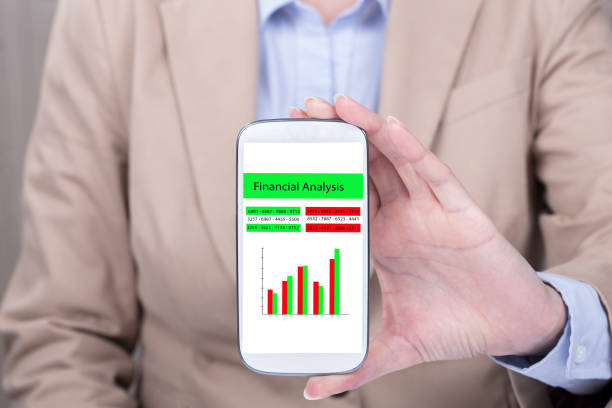How To Apply AI For Predictive Analytics In Financial Markets

Imagine a world where you could see the future of the financial markets with perfect accuracy. A world where you could know which stocks will go up and which ones will go down, which currencies will strengthen and which ones will weaken, and which commodities will rise and fall.
While perfect accuracy is impossible, AI-powered predictive analytics can help you to make better investment decisions by giving you insights into the future of the financial markets.
In this blogpost, we shall look into How to apply AI for predictive analytics in financial markets.
What is AI-powered predictive analytics?

According to Linkedin, AI-powered predictive analytics is the use of artificial intelligence (AI) to analyze data and predict future outcomes. AI-powered predictive analytics is used in a variety of industries, including the financial markets.
How does AI-powered predictive analytics work in the financial markets?
AI-powered predictive analytics works by analyzing historical data and identifying patterns. This data can include things like stock prices, currency exchange rates, and commodity prices.
Once the AI-powered predictive analytics model has identified patterns, it can use these patterns to predict future outcomes. For example, an AI-powered predictive analytics model could predict which stocks are likely to go up in price based on their historical performance.
How to apply AI for predictive analytics in financial markets
There are a number of ways to apply AI for predictive analytics in financial markets. Here are a few examples:
- Predicting stock prices: AI-powered predictive analytics models can be used to predict stock prices. These models can be used to identify stocks that are likely to outperform the market.
- Predicting currency exchange rates: AI-powered predictive analytics models can be used to predict currency exchange rates. These models can be used to identify currencies that are likely to strengthen or weaken.
- Predicting commodity prices: AI-powered predictive analytics models can be used to predict commodity prices. These models can be used to identify commodities that are likely to rise or fall.
Benefits of using AI for predictive analytics in financial markets
Relevant Software says that there are a number of benefits to using AI for predictive analytics in financial markets. These benefits include:
- Improved investment decision-making: AI-powered predictive analytics can help you to make better investment decisions by giving you insights into the future of the financial markets.
- Reduced risk: AI-powered predictive analytics can help you to reduce risk by identifying potential problems and risks early on.
- Increased profits: AI-powered predictive analytics can help you to increase profits by identifying opportunities to buy and sell assets.
Challenges of using AI for predictive analytics in financial markets
There are a number of challenges to using AI for predictive analytics in financial markets. These challenges include:
- Cost: AI-powered predictive analytics solutions can be expensive to develop and implement.
- Complexity: AI-powered predictive analytics solutions can be complex to use and understand.
- Data quality: The accuracy of the predictions made by AI-powered predictive analytics models depends on the quality of the data that is used to train the models.
Tips for using AI for predictive analytics in financial markets
Here are a few tips for using AI for predictive analytics in financial markets:
- Start small: Don’t try to use AI for predictive analytics for all of your investments. Start by using it for a small number of investments and see how it performs.
- Use a variety of data sources: The more data that you use to train your AI-powered predictive analytics model, the more accurate it will be. Use a variety of data sources, such as historical data, news data, and social media data.
- Monitor your results: It is important to monitor the performance of your AI-powered predictive analytics model and to make adjustments as needed. The financial markets are constantly changing, so it is important to ensure that your model is up to date.
FAQs about How to apply AI for predictive analytics in financial markets
Alright guys, now let us look into the most frequently asked questions about applying AI for predictive analytics in financial markets.
What is AI-powered predictive analytics?
AI-powered predictive analytics is the use of artificial intelligence (AI) to analyze data and predict future outcomes. AI-powered predictive analytics is used in a variety of industries, including the financial markets.
How does AI-powered predictive analytics work in the financial markets?
AI-powered predictive analytics works by analyzing historical data and identifying patterns. This data can include things like stock prices, currency exchange rates, and commodity prices.
Once the AI-powered predictive analytics model has identified patterns, it can use these patterns to predict future outcomes.
For example, an AI-powered predictive analytics model could predict which stocks are likely to go up in price based on their historical performance.
What are the benefits of using AI for predictive analytics in financial markets?
There are a number of benefits to using AI for predictive analytics in financial markets, including:
- Improved investment decision-making: AI-powered predictive analytics can help you to make better investment decisions by giving you insights into the future of the financial markets.
- Reduced risk: AI-powered predictive analytics can help you to reduce risk by identifying potential problems and risks early on.
- Increased profits: AI-powered predictive analytics can help you to increase profits by identifying opportunities to buy and sell assets.
What are the challenges of using AI for predictive analytics in financial markets?
There are a number of challenges to using AI for predictive analytics in financial markets, including:
- Cost: AI-powered predictive analytics solutions can be expensive to develop and implement.
- Complexity: AI-powered predictive analytics solutions can be complex to use and understand.
- Data quality: The accuracy of the predictions made by AI-powered predictive analytics models depends on the quality of the data that is used to train the models.
How can I get started with using AI for predictive analytics in financial markets?
There are a number of benefits to using AI for predictive analytics in financial markets:
- Start small: Don’t try to use AI for predictive analytics for all of your investments. Start by using it for a small number of investments and see how it performs.
- Use a variety of data sources: The more data that you use to train your AI-powered predictive analytics model, the more accurate it will be. Use a variety of data sources, such as historical data, news data, and social media data.
- Monitor your results: It is important to monitor the performance of your AI-powered predictive analytics model and to make adjustments as needed. The financial markets are constantly changing, so it is important to ensure that your model is up to date.
Conclusion
AI-powered predictive analytics is a powerful tool that can help investors to make better investment decisions.
However, it is important to use AI-powered predictive analytics carefully and to be aware of the challenges. By following the tips above, you can increase your chances of success when using AI-powered predictive analytics in financial markets.
I believe that AI-powered predictive analytics has the potential to revolutionize the way that people invest.
By giving investors insights into the future of the financial markets, AI-powered predictive analytics can help investors to make better investment decisions and to reduce risk.
However, it is important to use AI-powered predictive analytics carefully. AI-powered predictive analytics models are not perfect, and they can be wrong.
It is important to do your own research and to use AI-powered predictive analytics as a tool to help you make better investment decisions, not as a replacement for your own judgment.








